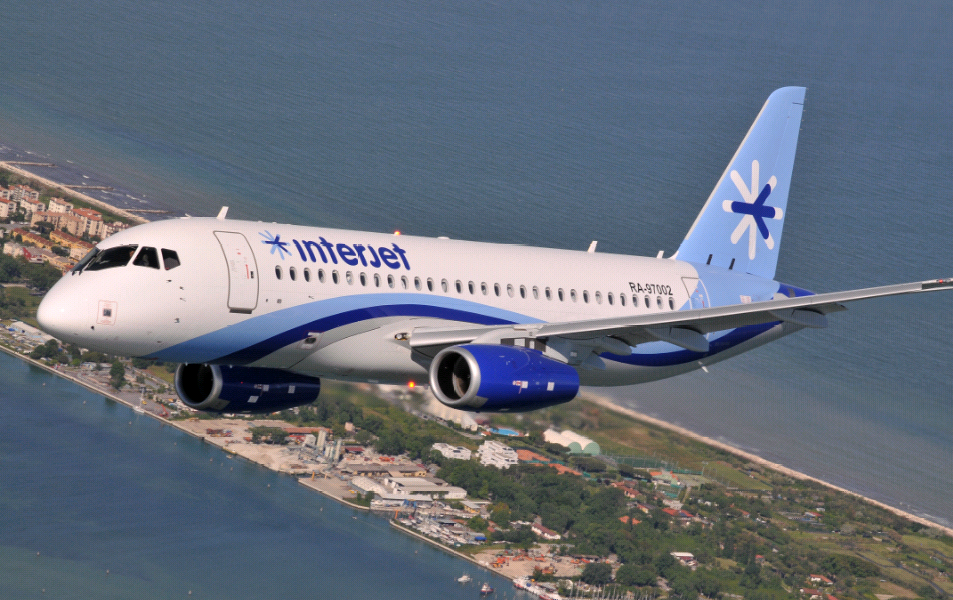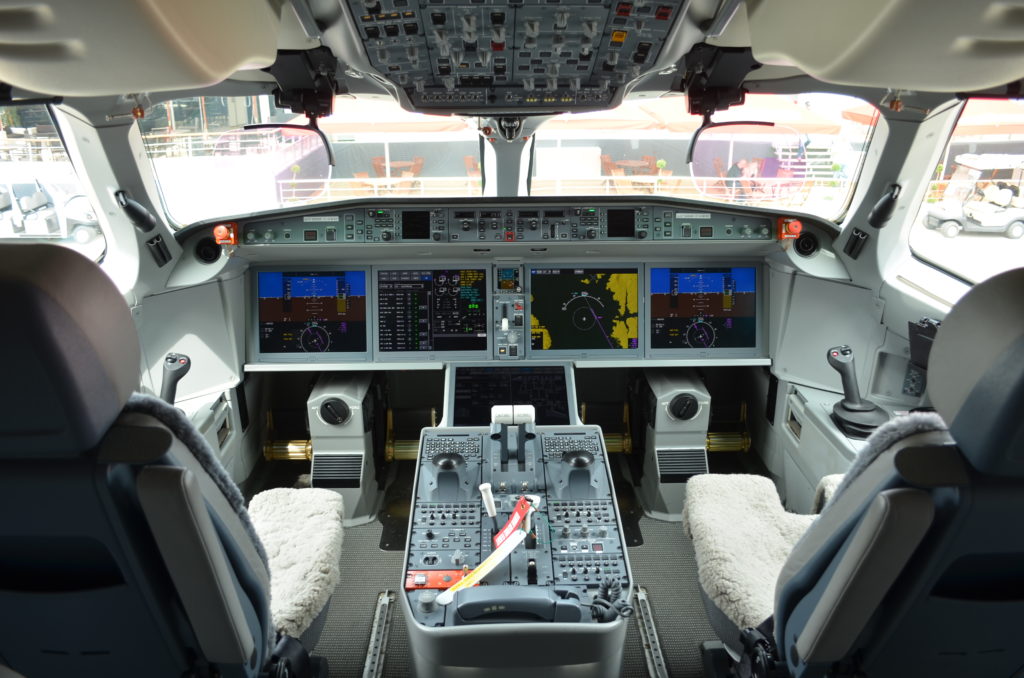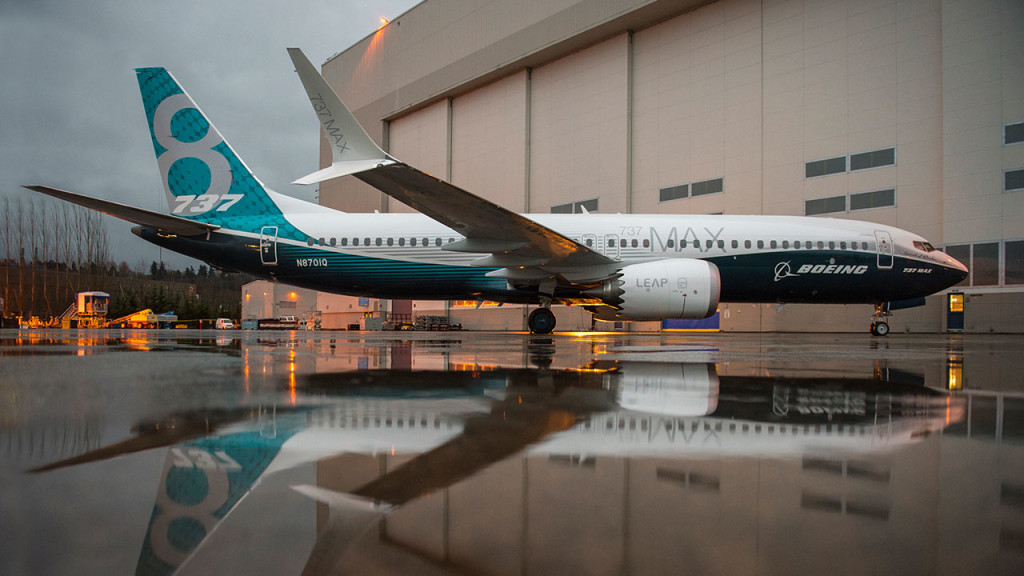Leeham News and Analysis
There's more to real news than a news release.
Russian-Chinese wide-body; The aircraft Part 3
By Bjorn Fehrm
Subscription required.
Introduction
September 08, 2016, ©. Leeham Co: Having covered the possibilities of reusing parts of the Il-96 fuselage for a new Russian-Chinese wide-body, it’s now time to look at the existing IL-96 wing and how far this is from a modern design.
The intent is not to propose that the existing wing is reused but rather to check the technology level against western designs and how big a leap it will be for the partners to make a modern high performance wing for the aircraft.
Summary:
- The IL-96 wing is roughly on the technological level of the Airbus A340-300 wing with a bit lower aspect ratio.
- The dimensions are close to what is needed for the new wide-body but sweep and aspect ratio needs to be changed for a new wing.
- A wing for a 2025 long range wide-body also need a more modern construction technology than classical aluminum alloys.
IRKUT MC-21 analysis, Part 4. Performance with PD-14
By Bjorn Fehrm
Subscription required.
Introduction
March. 14, 2016, ©. Leeham Co: In three articles we have been looking at the new Russian single aisle aircraft, Irkut MC-21, from United Aircraft and the new Russian engine that is being developed for the aircraft, the PD-14.
The PD-14, which is offered as an alternative to the base engine for the aircraft, the Pratt & Whtiney PW1400G, was analysed in our Part 3 article. We now mount the engine on the MC-21 and explore the difference in performance compared to the base engine.
Summary:
- The PD-14, which is a new engine designed by the Aviadvigatel company, is a clear step forward for the Russian turbofan industry.
- In our analysis in Part 3, we could see that it has a classical direct drive construction with a good level of technology in several parts.
- Weight and installation dimension are similar to the competition but efficiency is a bit behind.
- We now explore the performance of the MC-21 with the Russian engine.
Singapore Air Show pictorial
Feb. 2123, 2016: The Singapore Air Show ended last week with a dearth of news. William Bain, associate professor and co-editor of International Relations, provided LNC with these photos.
Irkut MC-21, first analysis
By Bjorn Fehrm
Subscription required.
Introduction
Feb. 08, 2016, © Leeham Co: We recently covered China’s COMAC C919 and now the time has come to the other new narrow body aircraft from the old Communist bloc, the Russian MC-21.
The aircraft is called Irkut MC-21. Not many have heard of Irkut, so the first reaction is that this aircraft is made by a new Russian aircraft firm. The change is that United Aircraft (the Russian aircraft industry holding company) this time called the aircraft after its manufacturing company and not the design bureau, Yakovlev, that Irkut acquired in 2004. There are discussions to change back to the project’s original name Yakovlev 242 once certification is done.
When we looked at the first civil airliner that the Russian federation designed after the fall of Soviet Union, the Sukhoi Superjet 100, we found a well designed aircraft equipped with Western system. The MC-21 follows the same lines, but has more Russian technological development. It is therefore well worth a look.
Summary:
- The MC-21 has its own profile. It is not a copy of a Western aircraft. It has a wider cabin than the A320, a wing which allows a higher cruise speed and a higher capacity in its base variant, the MC-21-300.
- To make a meaningful comparison between the MC-21 and established aircraft, we have chosen to compare the MC-21-200 with the Airbus A320neo, as the MC-21-300 is larger than the A320neo but smaller than an A321neo. The MC-21-200 is closer in size to an A320neo. Read more
Analysis: Sukhoi’s regional jet SSJ100, Part 2
By Bjorn Fehrm
Subscription required
Introduction
21 January 2016, ©. Leeham Co: The first part of our analysis, published Monday, looked at Russia’s first effort to design and aircraft to penetrate the Western airplane market, Sukhoi Superjet (SSJ100). We concluded that the SSJ100 regional airliner was a good effort.
The aircraft was essentially a Russian airframe with Franco-Russian engines, Western systems and Western avionics. For aircraft that are delivered to Western airlines, it also has an Italian-designed/produced interior.
The aircraft has been in successful deployment with Interjet of Mexico and has now been ordered by CityJet of Dublin. After having looked at base characteristics of the aircraft/engine and also analysed the fuel consumption, we now continue with developing the Cash and Direct Operating Costs of the SSJ100. We compare it with the market leader in the 100 seats regional market, Embraer’s E190.
Summary:
- The SSJ100 is competitive on fuel costs compared to the E190.
- Maintenance costs for SSJ100 is still hard to predict as there is still too limited operational experience.
- Capital costs are lower for the SSJ100. This means that Direct Operating Costs, DOC, are attractive for the SSJ100.
Analysis: Sukhoi’s regional jet Superjet 100
By Bjorn Fehrm
Subscription required
Introduction
18 January 2016, © Leeham Co: Russian aircraft have never succeeded in penetrating the Western market. But then they never really tried, until now. They were designed for the Soviet Union captive market, including the partner states that historically participated in or were friendly to the communistic system. One comes to think of China, Egypt, Libya, Cuba and Nicaragua. The Sukhoi Civil Aircraft Company (SCAC) Superjet 100 (SSJ100) is the first Russian aircraft specifically designed from the outset to compete on a world market.
The Sukhoi Civil Aircraft Company (SCAC) Superjet 100 (SSJ100) is the first Russian aircraft specifically designed from the outset to compete on a world market.
We analyse its basic design and performance in comparison to the market leader in 100 seat regional flying, Embraer’s E190.
Summary:
- The SSJ100 is a half a generation younger design than the Embraer E190. It has modern aerodynamics, IMA-based modular avionics and an advanced Fly-By-Wire system.
- The feedback-based Fly-By-Wire enables a tight aircraft design with low wetted areas.
- The SSJ100 engines, SaM146, can best be described as a shrinked and cleaned up CFM56. They have the efficiency level of the E190’s CF34-10E.
- The aerodynamics and engines combine to give the SSJ100 a single digit edge in fuel burn over the E190.
Bjorn’s Corner: Russian aircraft industry.
22 August 2015, ©. Leeham Co: The Russian air show MAKS is taking place in Moscow, on the airfield of Zhukovsky, Southeast of Moscow. The town of Zhukovsky is called the Aero-City of the Russian federation. It houses not only a 17,800ft runway but also the center of the Russian aeronautical research and test knowledge around the gigantic airfield.
Just a couple of miles from the airfield lies the well-known Russian Central Aerohydrodynamic Institute, TsAGI. It has been involved in designing the aerodynamics of all Russian aircraft, including the latest, the Sukhoi Superjet and Irkut’s new MC-21 competitor to the Boeing 737 MAX and Airbus A320neo.
I have always been interested in the enigma of the Soviet and later Russian aeronautical industry. It had such a different structure to its western counterparts and has therefore struggled. The MC-21 is a good example. Ilyushin says they are working on MC-21, as does Yakolev and Irkut. Irkut says it is their aircraft, yet I had not heard of Irkut as a plane OEM before MC-21.
My household names for Russian airliners were Tupolev and Ilyushin with perhaps Yakolev for the smaller types. If we included Ukraine during the Soviet period, we could add Antonov as a known airliner OEM. But not Irkut. Yet today the main players doing new civil airliners are Sukhoi and Irkut, neither known for building airliners. How does this all fit together? Here is a try to sort it out. Read more






